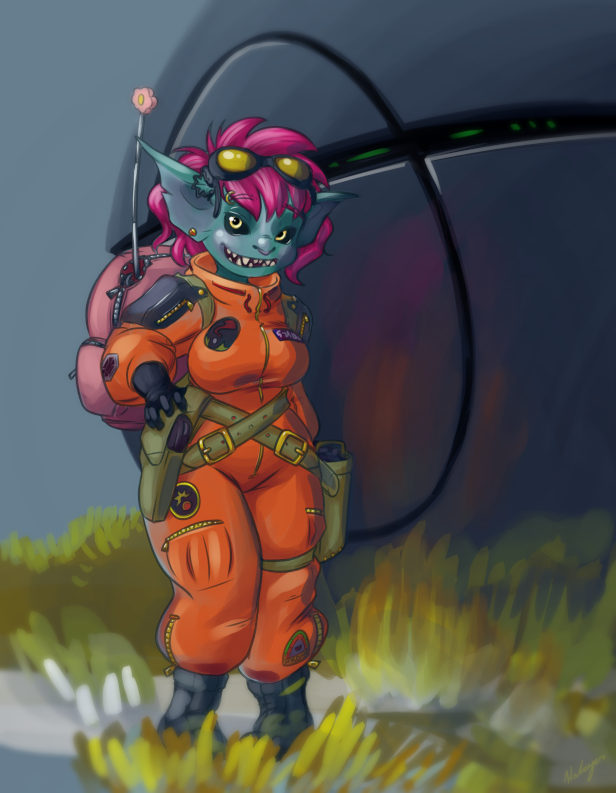This is the first in what will be an ongoing series of interviews done by Artconomy staff with various artists in the community.
We’re hoping that through these interviews we can help the artist and commissioning communities at large.
What name do you go by?
Haley or Halcyon
What’s the URL for your Artconomy profile?
What sort of art do you do? Any type/subject you enjoy the most?
Digital illustration and painting mainly, but I am practicing other media lately.
Some oil painting, some jewelry and craft projects. And soon, I’d like to try some screen printing.
I enjoy creating and designing interesting characters and depicting cute situations.
I’m mainly known for illustrating transformations; human to anthropomorphic and gender transformations.
How long have you been doing art? And how long have you been taking commissions?
I’ve been doing art for most of my life. Eight-years-old is my earliest recollection.
I remember drawing spaceships with rainbow lasers, Bugs Bunny, and Cheetara from the original Thundercats. Or, at least, trying to. So about 33 years now.
The earliest commissions I’ve taken was back in 2000.
I scanned in the picture of a jackal girl I drew for them and emailed it.
They sent me a 10 dollar bill in the mail. I didn’t take them regularly till I set up a PayPal account.
Do you have a particular piece you’re proud of and would like to share?
What are your favorite and least favorite parts of the process?
My favorite part of the process is trying new techniques I may have learned and having it come out well.
A technique I see from an online video, a new brush I found or I made in Clip Stuido, or something I read in a book. It’s exciting for me.
My least favorite part is thinking I did well on something only to go back to look at something months later and seeing the imperfections.
But I try not to dwell on an art piece and think only about moving forward and learning from a mistake. Remembering what to look for next time so I don’t make the same mistakes.
Before Artconomy, how did you handle commissions?
I have typically done my commissions by receiving an email from a client, telling me what they’d like done and I quote a price.
If they agree to the price, I send an invoice.
Correspondence through email helps me keep record with gmail’s system. Artconomy certainly streamlines the process and makes the client feel more secure with their purchase.
What would you say is the hardest/most time consuming part of the process for you?
Time management is the most difficult for me.
I feel pressure to work on commissions till they’re done. Putting in 10-12 hour days.
But that can easily burn anyone out. I’ve learned to take breaks, pace myself better, take time between commissions to do personal artwork.
Is there a piece of advice you wish you’d gotten when you were starting out? And/or any tips for other commission artists?
Be patient with your clients.
Sometimes they have trouble putting what they’d like into words.
Sometimes you have to explain why things might look better.
Luckily, most clients trust an artist enough to leave things to them.
And sometimes I have bowed to a design decision I know is wrong.
Anything else you’d like to share with us/other artists/commissioners?
Don’t do art if you’re not doing it for yourself or if you don’t have the dedication to stick with it.
If you don’t enjoy making art, it may not be for you and it will become a chore.
Personal projects that you’re proud of might get the least attention.
Don’t get discouraged. Don’t compare yourself to other artists.
There will always be someone that is better at it than you are.
But they’re only better in different ways you may not have had an opportunity to try yet.
Learn from other artists, many other artists. Don’t try to emulate one artist you like.
Find things from many artists and incorporate elements from all of them to make your own style. Always be learning. T
ry new things, new mediums as often as you’re able. This breaks monotony and can give you new ideas.
Your style SHOULD change gradually over time and some of your audience might not like how you evolve, but you’re more likely to attract more people who appreciate the effort you put in.
If they really enjoy your art, they will be more likely to stick around to see how you evolve as an artist.



